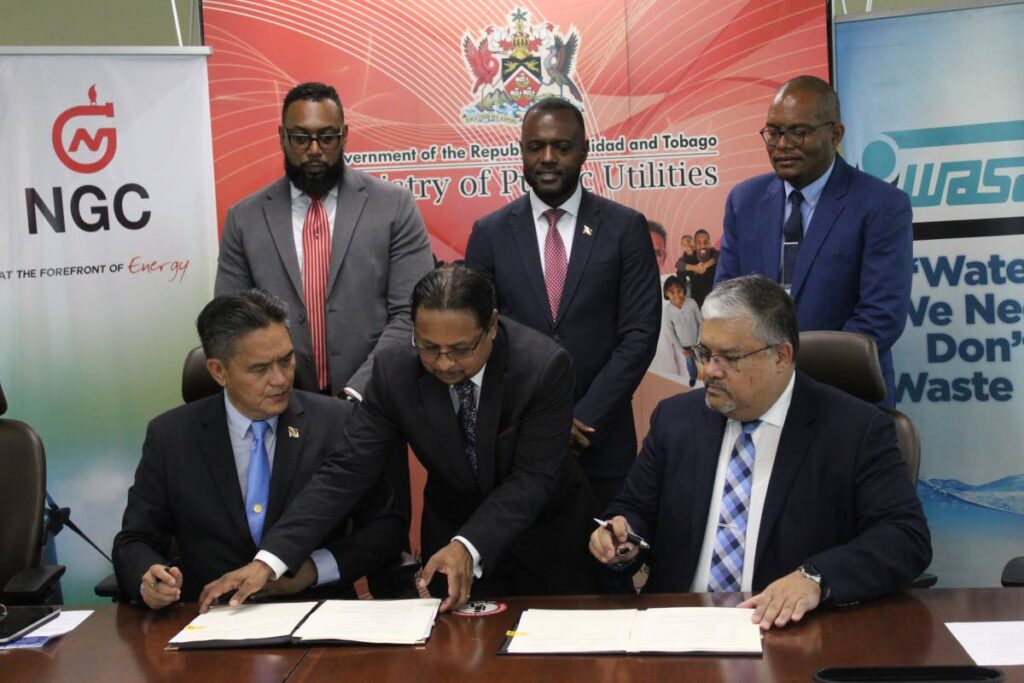NGC, WASA team up, a good move

In retrospect, a collaboration between the National Gas Company, which oversees miles of pipelines carrying volatile petrochemicals, and WASA, which has experienced decades' worth of problems with leaks on its pipelines, seems to be a no-brainer.
Rather surprisingly, WASA chairman Ravindra Nanga explained that when NGC approached an earlier WASA administration their offer to assist was turned down. This time, NGC's overture was immediately followed by the breach of a 48-inch pipeline at the Caroni Water Treatment Plant that cut off water supply to 250,000 customers.
NGC has committed to provide the majority of the 48-inch pipes from its stock to begin the construction of a new pipeline from the Caroni plant.
On Thursday, the two state agencies signed a memorandum of understanding to formalise their collaboration, including a geographic information system (GIS) that will be used pinpoint leaks and support from NGC's experienced engineers.
GIS systems and other line-monitoring technologies are a key element of petrosector delivery, where there is zero tolerance for leaks that are not only expensive, but potentially lethal.
In the US, where there is also a difference in the quality of oil pipelines, which are subject to stringent regulation, and water pipelines, overseen by variable state attention, the reuse of existing petrochemical infrastructure to deliver water is being discussed. That core difference is also reflected in the differing quality of oil pipeline monitoring, which is driven by profit considerations and the management of public water pipelines.
The pipeline maintenance team at NGC would not be tolerant of a five per cent loss of natural gas on its network. Losing half of it in transmission? Impossible!
This confluence of skills built in the petrochemical extraction businesses and the needs of public water management is becoming widespread globally.
Once, oil was held to be more valuable than potable water. But concern is growing about diminished resources of drinking water, once believed to be ubiquitous.
Modern distribution of water is an evolution of the Roman aqueduct system, most notably the Aqueduct of Valens, built in 368 AD to bring water from Vize across 75 miles to Constantinople. Parts of the Roman aqueducts remain today, more than 16 centuries later, a testimony to the value of building a water distribution to robustly manage the most precious resource needed for human survival. Water pipelines should be built using the best possible materials and technology with resilience and monitoring embedded into the systems as a priority. This collaboration between NGC and WASA promises a beginning for overdue and refreshed thinking about the role of the authority in managing this increasingly precious resource with the attention and care it deserves.


Comments
"NGC, WASA team up, a good move"